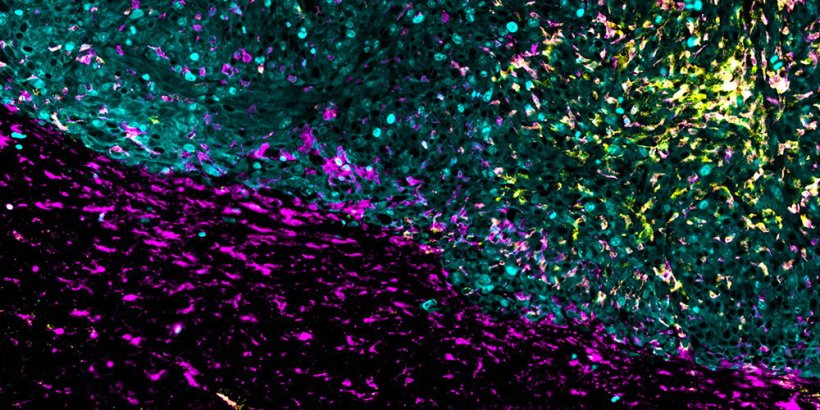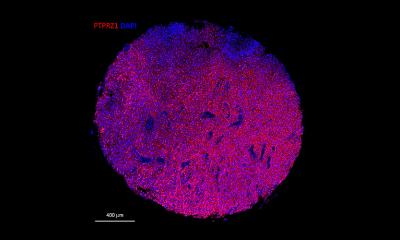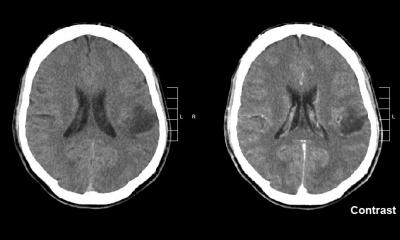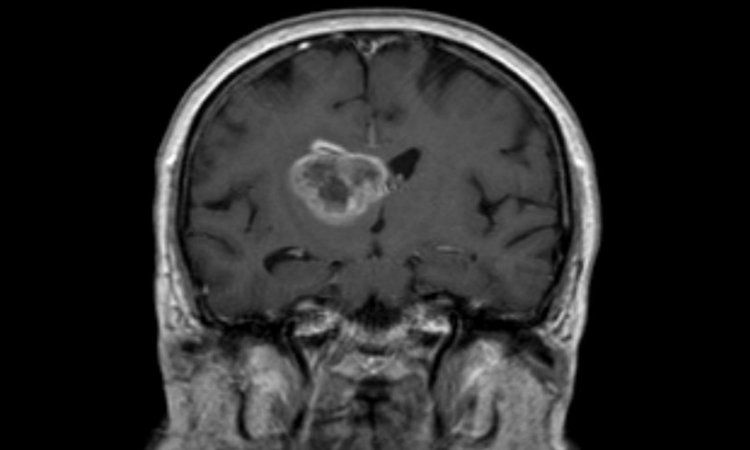
Image source: University of Basel, Tomás A. Martins
News • New therapy approach for brain tumors
Attacking glioblastoma from multiple angles
Glioblastoma is the most common kind of malignant brain tumor in adults. So far, no treatment has been able to make this aggressive tumor permanently disappear. The tumor cells are too varied, and the microenvironment is too tumor-friendly.
Researchers at the University of Basel and University Hospital Basel have now developed an immunotherapy that not only attacks the tumor—it also turns its microenvironment against it.
The researchers published their findings in the journal Nature Communications.
For some years now, CAR T-cells have been bringing new momentum to immunotherapies against cancer. How it works: experts take the patient's T-cells and reprogram them in the lab so that they can recognize structures on cancer cells with the help of a receptor called chimeric antigen receptor (CAR). Once back in the body, the T-cells hunt down and eradicate the cancer cells. This method has already been very successful in some forms of leukemia.
Since we inject the treatment locally and don't deliver it through the bloodstream, side effects on the rest of the body should be limited
Gregor Hutter
But solid tumors and especially brain tumors present obstacles to the success of CAR T-cells. First, it's difficult for the cancer hunters to get inside a tumor. Second, not all the cancer cells necessarily have the structure the T-cells can recognize and attack. And third, solid tumors in human tissue have a microenvironment that fends off immune system attacks. “Especially in the brain, where T-cells aren't normally found, the environment is really hostile to them,” explains Professor Gregor Hutter of the University of Basel and the University Hospital Basel.
Hutter and his team are searching for ways to fight glioblastoma. These brain tumors are unfortunately tenacious, usually returning even after operation and treatment. However, the time gained by an operation could be used to reprogram the patient's own T-cells into CAR T-cells in the lab. Injecting these directly into the regrowing tumor avoids the obstacle of the CAR T-cells not being able to get to the cancer. Once inside, the T-cells attack all cancer cells that carry the recognized structure.
The CAR T-cells developed by Hutter's team have an extra feature aimed at altering the microenvironment. The researchers also give the therapeutic T-cells a blueprint for a molecule. This molecule blocks the signals the tumor uses to hijack the immune cells in its environment for its own purposes. These signals allow the tumor to turn immune cells, or more precisely microglia and macrophages, into traitors to their own body. Instead of attacking the cancer, they prevent the immune system from attacking it.
Once the implanted molecule stops these tumor signals, macrophages and microglia can support the CAR T-cells in their attack on the glioblastoma— even on cancer cells that lack the specific recognized structure.
Trials with mice in whom the researchers implanted human glioblastoma cells have already shown that the treatment is very successful. The CAR T-cells were able to get rid of all of the cancer cells. The research team also tested the method against lymphoma, which is cancer of the lymphatic system. The treatment also appeared promising in these tests.
As their next step, Hutter and his team want to offer the treatment to patients in a first clinical study to test its effectiveness and safety. “Since we inject the treatment locally and don't deliver it through the bloodstream, side effects on the rest of the body should be limited,” says Gregor Hutter. However, possible side effects on the nervous system—which are already known to occur from other CAR T-cell therapies—and how much these can be curbed can only be determined through studies, he adds.
Source: University of Basel
14.11.2024










